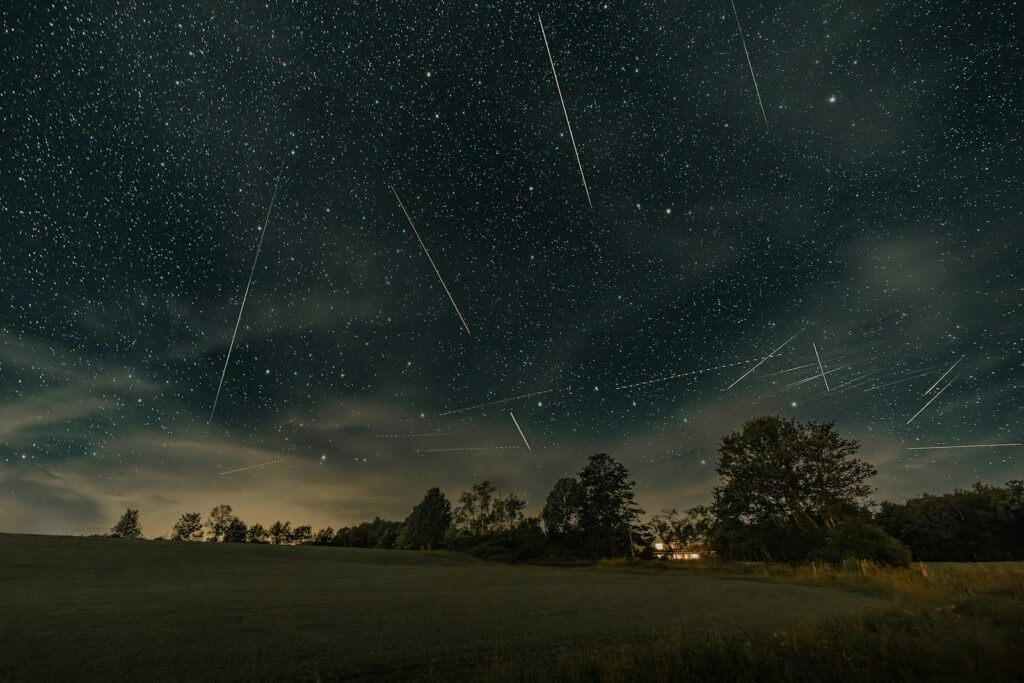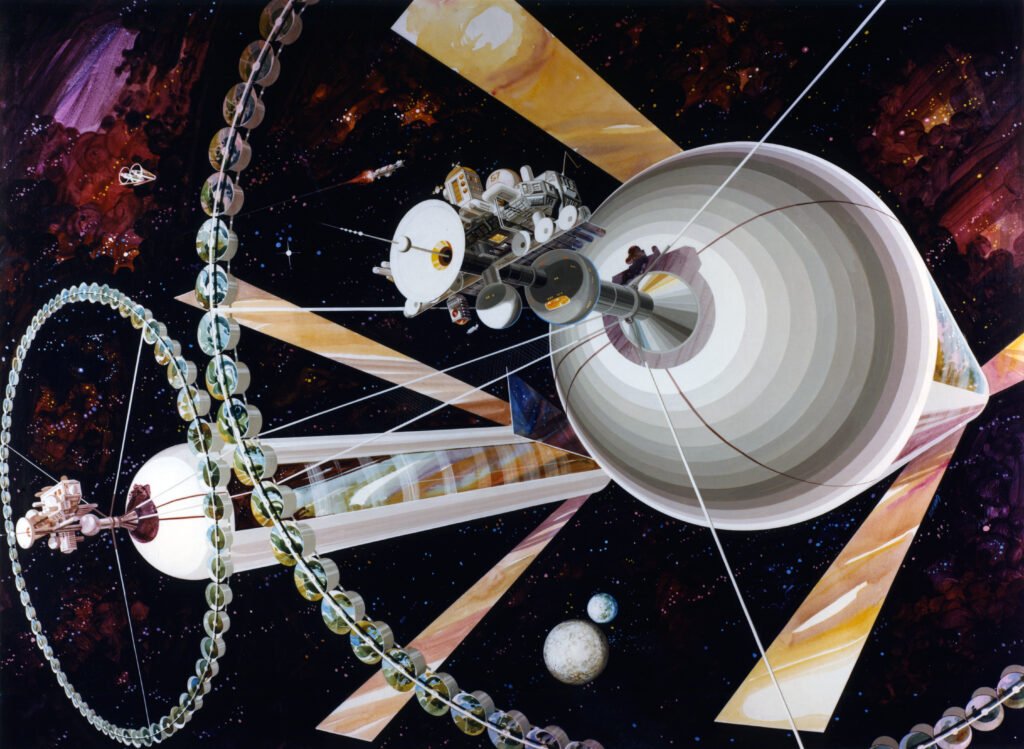On warm August nights, the heavens put on a show far grander than any firework display. The Perseid meteor shower, famous for its fast, bright streaks, is about to peak. But in 2025, stargazers face a challenge: a bright waning gibbous Moon rising just as the shower reaches its height. The cosmic puzzle is simple—how can we catch the shooting stars before the moonlight washes them away? This celestial conflict between moonlight and meteoroids creates a unique opportunity for both casual observers and scientists to study one of nature’s most dazzling displays under unusual conditions.
The Dilemma: A Cosmic Battle Between Moonlight and Meteoroids

The Perseid meteor shower typically offers one of the most reliable astronomical spectacles of the year, with peak rates reaching 50-100 meteors per hour under ideal conditions. However, 2025 presents a special challenge that will test the dedication of even the most experienced stargazers. The shower’s peak on the night of August 12-13 coincides with a bright waning gibbous moon, which will rise around midnight and significantly diminish visibility conditions.
This lunar interference comes with precise timing that observers must navigate carefully. According to NASA’s Meteoroid Environments Office lead Bill Cooke, “The average person under dark skies could see somewhere between 40 and 50 Perseids per hour. Instead, you’re probably going to see 10 to 20 per hour or fewer, and that’s because we have a bright Moon in the sky washing out the fainter meteors” 10. The moon’s presence will be particularly problematic during the pre-dawn hours when meteor activity traditionally peaks, creating a narrow window of opportunity between dusk and moonrise for optimal viewing. This celestial timing conflict offers both a challenge and an opportunity to study how moonlight affects meteor observation rates and public engagement with astronomical events.
Historical Significance: From Ancient Omens to Modern Science
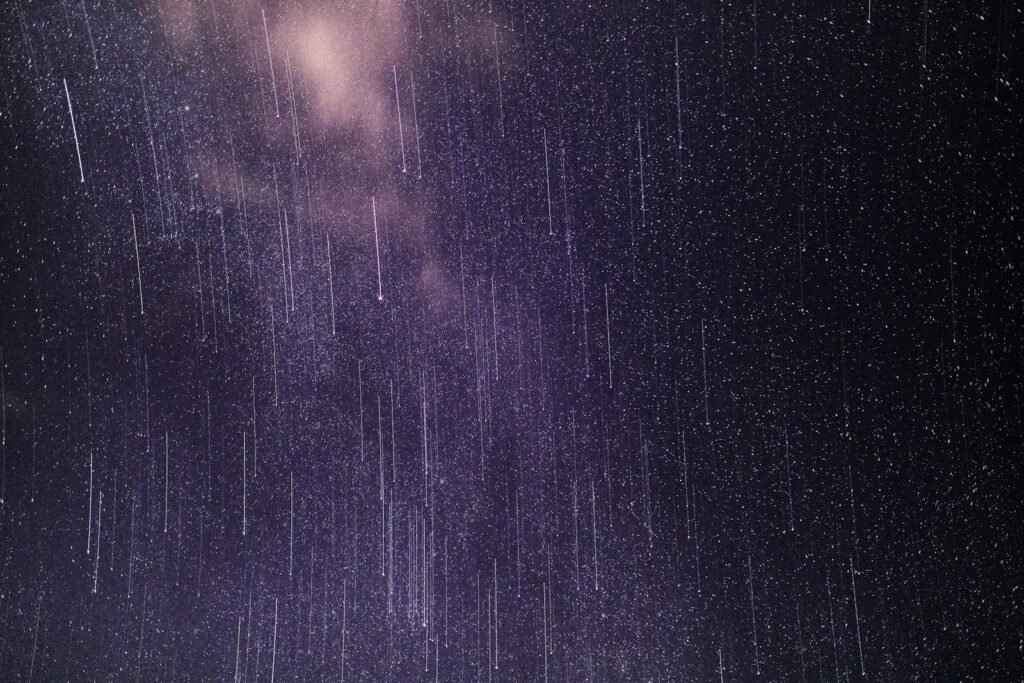
The Perseids have captivated human imagination for nearly two millennia, with the first recorded observations dating back to Chinese astronomers in 36 AD 9. Before scientific understanding transformed our interpretation of these celestial events, various cultures developed rich mythological explanations for the annual display. Catholics referred to them as the “tears of Saint Lawrence,” connecting them to the martyrdom of Saint Lawrence on August 10, 258 AD.
The transition from mythological to scientific understanding began in earnest in the 19th century. American skywatcher Edward Claudius Herrick proposed the revolutionary idea in 1838 that “these meteoric showers are derived from nebulous or cometary bodies which, at stated times, the earth falls in”. This theory was substantiated in 1865 when Italian astronomer Giovanni Schiaparelli definitively linked the Perseids to Comet Swift-Tuttle, establishing the fundamental connection between cometary debris and meteor showers that forms the basis of our modern understanding. This historical journey from mystical interpretation to scientific comprehension mirrors humanity’s broader relationship with the cosmos, reflecting our evolving ability to find natural explanations for celestial phenomena.
Scientific Explanation: The Cosmic Mechanics Behind the Display

The Perseid meteor shower originates from Comet Swift-Tuttle, a colossal celestial wanderer that takes approximately 133 years to complete its orbit around the Sun. This comet, measuring an impressive 16 miles (26 kilometers) across more than twice the size of the object believed to have caused the dinosaur extinction, leaves behind a trail of debris during its periodic journeys through the inner solar system. When Earth’s orbit intersects this path of cosmic debris, particles ranging from dust grains to small pebbles collide with our atmosphere at tremendous speeds of approximately 37 miles (59 kilometers) per second.
The transformation of these comet particles into visible meteors represents one of space’s most dramatic processes. As the debris enters Earth’s atmosphere, atmospheric friction causes them to heat up and disintegrate, creating the brilliant streaks of light we observe from the ground. The larger particles produce particularly spectacular displays known as fireballs, which are larger explosions of light and color that can persist longer than an average meteor streak and appear brighter than the planet Venus. These fireballs originate from larger particles of cometary material and represent some of the most memorable moments of the annual shower, often leaving lingering trails that remain visible for several seconds after the initial flash.
Viewing Strategies: Maximizing Your Meteor Experience
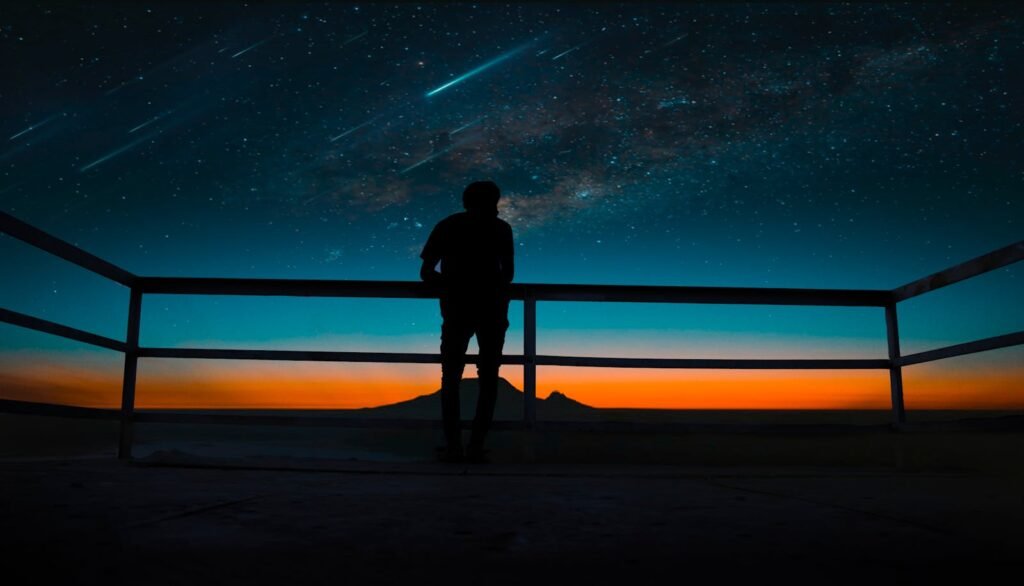
Despite the challenging lunar conditions in 2025, determined observers can employ several strategies to maximize their Perseid viewing experience. Timing proves crucial the best viewing window occurs between dusk and moonrise (around midnight), when the sky remains darkest. Location selection is equally important: seek out dark-sky sites far from urban light pollution, with open vistas that allow broad sky views rather than just focusing on the radiant point in Perseus.
Technological aids can enhance the experience despite the challenging conditions. Photography enthusiasts should use wide-angle lenses and long exposures to capture the brighter meteors that can overcome the moonlight. Apps like MeteorActive provide hour-by-hour predictions of meteor activity tailored to your location, helping optimize viewing timing. For citizen scientists, NASA’s Meteor Counter app offers an opportunity to contribute meaningful data to professional research despite the compromised viewing conditions, demonstrating how modern technology can enhance even suboptimal astronomical viewing.
Global Phenomenon: Worldwide Observations and Cultural Connections
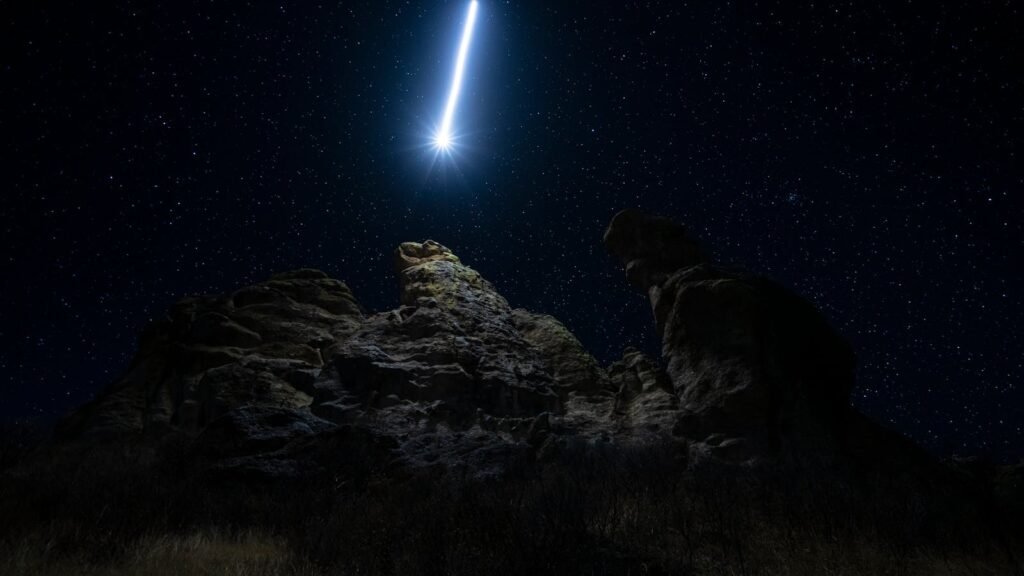
The Perseids represent a truly global astronomical event, with observations occurring across cultures and continents. In the Northern Hemisphere, where the shower is most visible due to its radiant point’s position, countless communities organize viewing events. From astronomy clubs hosting star parties in North American dark-sky parks to families gathering after Bon Festival traditions in Japan, the shower creates shared experiences across cultures. Even in regions where the Perseids are less active, such as the Southern Hemisphere, dedicated observers still report significant meteor sightings.
The 2025 shower has already produced remarkable observations from around the world. Photographer Harlan Thomas captured the rare combination of Perseid meteors streaking across the sky while the northern lights danced overhead. Even more impressively, photographer Matt Melnyk snapped a breathtaking view of a Perseid blazing through aurora-lit skies at 37,000 feet aboard a Boeing 787 ‘Dreamliner’ traveling from Calgary to London. These diverse observations highlight how modern technology enables documentation of meteor showers in ways previously impossible, creating new opportunities for both scientific study and public engagement with celestial events.
Scientific Importance: Beyond the Spectacle

While the visual spectacle of the Perseids captures public imagination, their scientific significance extends far beyond their beauty. Meteor showers provide valuable insights into the composition and behavior of cometary debris, offering clues about the early solar system’s formation. Each meteor represents a sample of cometary material that scientists can study remotely through spectroscopy, analyzing the light emitted during atmospheric entry to determine chemical composition without physically retrieving samples.
NASA’s Fireball Network and similar initiatives worldwide use the Perseids and other showers to refine planetary defense strategies by studying how larger fragments behave when encountering Earth’s atmosphere. The data collected helps model potential impact scenarios from larger near-Earth objects. Additionally, monitoring annual variations in meteor rates helps scientists map the distribution of debris within comet trails, revealing how these trails evolve over time under gravitational influences from planets like Jupiter, which can occasionally cause resonance enhancements that boost meteor rates beyond typical levels.
Future Outlook: Technological Advances and Changing Conditions

The future of meteor observation promises increasingly sophisticated methods for studying and enjoying showers like the Perseids. Upcoming facilities like the Vera C. Rubin Observatory in Chile will revolutionize meteor astronomy with systematic surveys of the night sky. Space-based observation platforms may eventually monitor meteor showers from above Earth’s atmosphere, eliminating weather and moonlight obstacles that ground-based observers face.
Looking further ahead, the Perseids’ parent comet Swift-Tuttle will return to the inner solar system in 2125, potentially refreshing the debris trail and enhancing future showers. Meanwhile, the growing light pollution problem threatens ground-based observation, with over 80% of the world’s population now living under light-polluted skies. This challenge has sparked initiatives like the Dark Sky Movement, which works to preserve and restore dark sky sites through lighting regulations and public education. For future Perseid showers, particularly the highly anticipated 2028 event that coincides with a new moon, these preservation efforts may determine how many people can experience the shower in its full glory.
How to Participate and Contribute
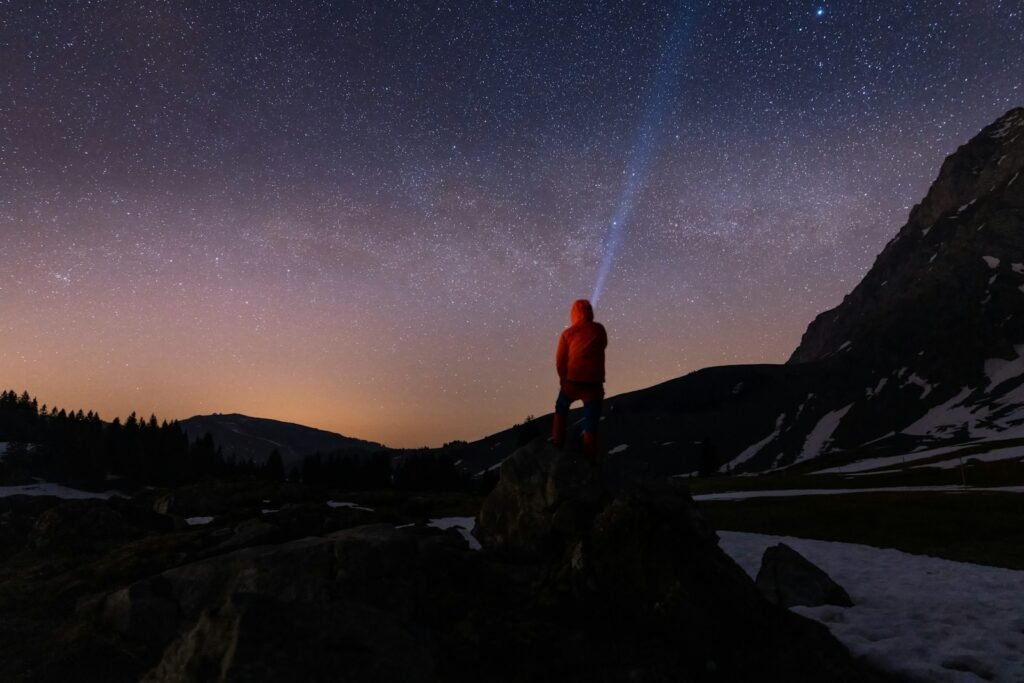
The 2025 Perseid meteor shower, despite its lunar challenges, offers opportunities for both personal enjoyment and scientific contribution. Here’s how you can participate:
- Optimize Your Viewing: Find the darkest possible location using light pollution maps, allow 30 minutes for dark adaptation, and use red-filtered flashlights to preserve night vision.
- Report Your Observations: Use citizen science apps like NASA’s Meteor Counter or the American Meteor Society’s reporting system to contribute your observations to professional research. These reports help scientists refine meteor shower models and understand annual variations.
- Spread Awareness: Share your experiences and knowledge with friends and family, especially with younger generations who may be experiencing their first meteor shower. Astronomy clubs worldwide welcome newcomers and often host special events during major showers.
- Advocate for Dark Skies: Support local initiatives to reduce light pollution through responsible lighting ordinances. Protecting dark skies ensures future generations can continue to enjoy celestial wonders like the Perseids.
Even under challenging conditions, the Perseids offer a connection to the cosmos and a reminder of our place in the solar system. As Bill Cooke from NASA reminds us, “You’re not going to see Perseids around suppertime. You’re going to have to go out later”. The effort to observe despite obstacles reflects our enduring fascination with the night sky and the wonders it contains.
Sources:
NASA Solar System Exploration , NASA Blogs , American Meteor Society

Suhail Ahmed is a passionate digital professional and nature enthusiast with over 8 years of experience in content strategy, SEO, web development, and digital operations. Alongside his freelance journey, Suhail actively contributes to nature and wildlife platforms like Discover Wildlife, where he channels his curiosity for the planet into engaging, educational storytelling.
With a strong background in managing digital ecosystems — from ecommerce stores and WordPress websites to social media and automation — Suhail merges technical precision with creative insight. His content reflects a rare balance: SEO-friendly yet deeply human, data-informed yet emotionally resonant.
Driven by a love for discovery and storytelling, Suhail believes in using digital platforms to amplify causes that matter — especially those protecting Earth’s biodiversity and inspiring sustainable living. Whether he’s managing online projects or crafting wildlife content, his goal remains the same: to inform, inspire, and leave a positive digital footprint.

